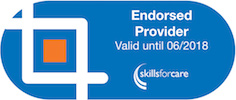Learn the essentials of First Aid for those who work at sea or on a vessel


This three day course is tailored to a marine type workplace and will contain similar content that derives from the standard workplace first aid qualifications.
First aid at work for mariners involves providing immediate medical care to a person who has been injured or taken ill while at sea or working on a vessel. The primary goals of first aid are to preserve life, prevent the condition from worsening, and promote recovery.
Mariners should know:
-
Bleeding: Apply direct pressure to the wound with a clean cloth or bandage to stop the bleeding. Elevate the wound if possible.
-
Burns: Run cool water over the burned area for 20 minutes.
-
Fractures and sprains: Immobilise the affected area by splinting or using a sling. Do not move the injured limb unless it is absolutely necessary.
-
Hypothermia: Move the person to a warm, dry place and wrap them in blankets or warm clothing. Provide warm, non-alcoholic fluids to drink.
-
Choking: If the person is conscious, encourage them to cough. If they are unable to cough, perform the backslaps and abdominal thrusts if necessary.
It is important to have a well-stocked first aid kit on board and to know how to use its contents. The kit should include items such as bandages, gauze, antiseptic wipes, scissors, tweezers, and pain relievers and much more. Additionally, it is recommended to have a medical reference guide or handbook on board to help with diagnosing and treating medical conditions.
The content of this and all our courses has been independently certified as conforming to universally accepted Continuous Professional Development (CPD) guidelines and come with a Certified CPD Statement as well as a ProTrainings Certificate and for online courses an Evidence Based Learning statement.






